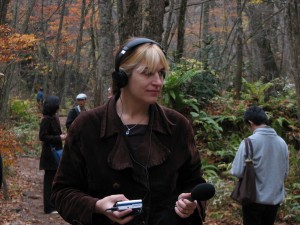EMPAC @ Rensselaer
Rensselaer Polytechnic Institute, 110 8th Street, Troy, NY 12180
USA
Abstract
In the 21st century, there has been a resurgence of ecologically conscious art using new media technologies. Like Eco-art, this recent Ecomedia movement is interdisciplinary and global. Ecomedia is heavily influenced by developments in science, particularly remote imaging and other Earth sensing (for example, the widespread use of GPS data) and developments in computer modeling (for example, detailed models that not only model the physics of the Earth and solar system, but also explore the Earth’s chemistry and biology). This presentation will include a series of public art work case studies, both permanent and temporary, that could be considered ecomedia.
While Ralph Waldo Emerson in the 1840’s saw wilderness as ‘essences unchanged by man: space, the air, the river, the leaf’ and as perpetually regenerative, in the 21st century many scholars like Bill Mckibbon have expressed concern that we are facing ‘the end of nature’. Clearly this speaks to an urgent need to re-examine the connection between humanity and our wild spaces. The ecomedia case studies gathered for this presentation require deep reflection, a historical foundation and critical analysis. What have been the historical precedents for this kind of work? How have these prior initiatives succeeded or failed and what can we learn from this history? What can we learn from the case studies of collaborations and other models internationally? How can we move forward to a more sustainable context for art and science collaborations in the field nationally and internationally?


